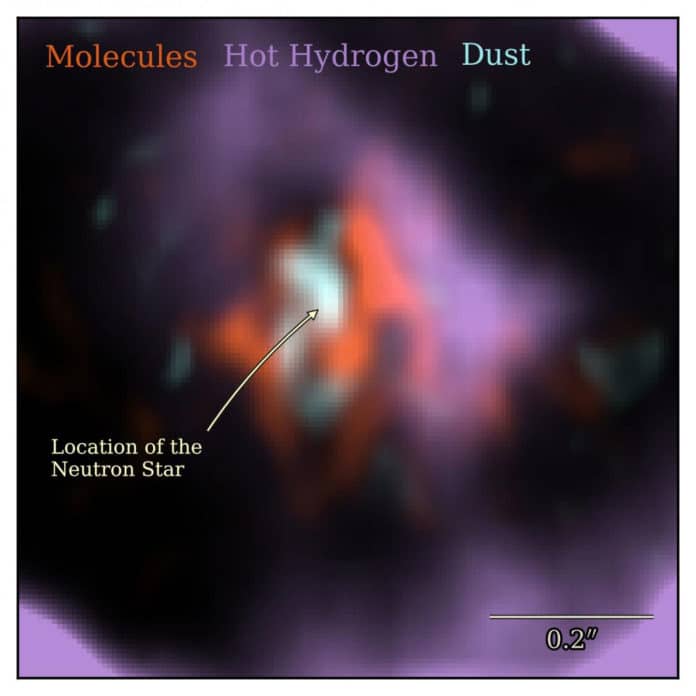SN 1987A was a type II supernova in the Large Magellanic Cloud. It was the first supernova that cutting edge space experts had the option to think about in incredible detail, and its observations have given a lot of understanding into core-collapse supernovae.
SN 1987A appears to be a core-collapse supernova, which should result in a neutron star given the size of the original star. The neutrino data indicate that a compact object did form at the star’s core. However, since the supernova first became visible, astronomers have been searching for the collapsed core but were not able to detect it.
Now, astronomers at the Cardiff University claim to discover evidence of the location of that missing neutron star. Astronomers used extremely sharp and sensitive images taken with the Atacama Large Millimeter/submillimeter Array (ALMA) telescope in the Atacama Desert of northern Chile and detected a specific patch of the dust cloud that is more brighter than its environment, and which coordinates the associated location of the neutron star.
Lead author of the study Dr. Phil Cigan, from Cardiff University’s School of Physics and Astronomy, said: “For the very first time we can tell that there is a neutron star inside this cloud within the supernova remnant. Its light has been veiled by a very thick cloud of dust, blocking the direct light from the neutron star at many wavelengths like fog masking a spotlight.”
Dr. Mikako Matsuura, another leading member of the study, added: “Although the light from the neutron star is absorbed by the dust cloud that surrounds it, this, in turn, makes the cloud shine in sub-millimeter light, which we can now see with the extremely sensitive ALMA telescope.”
“Our new findings will now enable astronomers to understand better how massive stars end their lives, leaving behind these extremely dense neutron stars.”
“We are confident that this neutron star exists behind the cloud and that we know its precise location. Perhaps when the dust cloud begins to clear up in the future, astronomers will be able to see the neutron star for the very first time directly.”
The findings have been published in The Astrophysical Journal.
